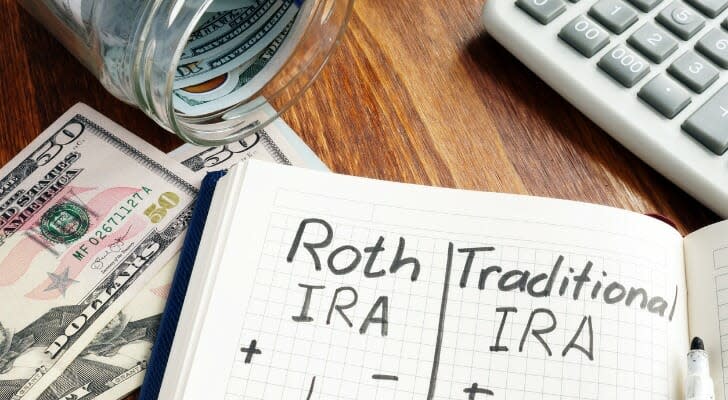How to Save for Retirement Without a 401(k)
A workplace 401(k) can be a great tool for retirement savings, but it isn’t the only way to build a nest egg for the future. If you don’t have access to a 401(k), there are a variety of alternatives that can help you save for retirement, from individual retirement accounts to health savings accounts and beyond. Below, we’ll highlight some of the top ways to save for retirement without a 401(k). If you need additional guidance, a financial advisor can assess your savings strategy and help you plan for retirement.
Individual Retirement Accounts
Individual retirement accounts or IRAs are among the most commonly used retirement savings vehicles. While 60 million people participated in 401(k) plans in 2020, nearly 48 million households had an IRA, according to the Investment Company Institute. Like a 401(k), an IRA is a tax-advantaged defined contribution retirement account for people with earned incomes. They can be funded with either pre-tax or after-tax dollars. But unlike a 401(k), IRAs do not require an employer to establish one. IRAs, which can be opened at most financial institutions, typically have more flexibility and investment options than 401(k)s.
However, you should note that the annual contribution limit of an IRA is significantly less than a 401(k). In 2022, IRA owners are only permitted to contribute up to $6,000 ($7,000 if you’re 50 or older) to their account — the same as the 2021 limit. A 401(k) plan participant, meanwhile, can contribute up to $20,500 in 2022, up $1,000 from 2021 limits. What’s more, 401(k) participants who are 50 or older can add an extra $6,000 catchup contribution, if permitted by their plan.
IRAs come in several variations:
Traditional IRA: Contributions to a traditional IRA are typically tax-deductible and lower your taxable income. Taxes aren’t owed on the contributions until you start withdrawing the money, at which point, they are taxed as income.
Roth IRA: Contributions are made with money that has already been taxed. As a result, contributions grow tax-free within a Roth IRA. Unlike traditional IRAs, Roth IRAs are not subject to required minimum distributions.
SEP IRA: A simplified employee pension or SEP allows business owners and the self-employed to establish a workplace IRA. If you’re a one-person business, you can establish a SEP IRA and contribute up to 25% of your salary. However, for businesses with multiple employees, it’s the employer who makes the contributions.
SIMPLE IRA: Like a SEP IRA, a Savings Incentive Match Plan for Employees is also set up by an employer. However, employees make salary reduction contributions and employers make matching or nonelective contributions.
SARSEP: A Salary Reduction Simplified Employee Pension Plan or SARSEP is a type of SEP set up by an employer before 1997 and includes a salary reduction arrangement.
Health Savings Accounts
A health savings account or HSA allows you to save for future medical expenses with tax-deductible contributions. Unlike flexible savings accounts, contributions made to HSAs don’t need to be used each year. As a result, an HSA is a great way to pile up cash for future medical needs. Withdrawals from HSAs are also tax-free, as long as the money is used on qualified health care expenses.
Not everyone is eligible to open an HSA, though. To open an HSA, you need to be enrolled in a high deductible health plan (HDHP). In 2022, an HDHP is any plan with a deductible of at least $1,400 for an individual and $2,800 for a family — the same amounts as in 2021. The total yearly out-of-pocket expenses (including deductibles, copayments, and coinsurance) of an HDHP cannot exceed $7,000 for an individual or $14,000 for a family. In 2022, those maximums will rise to $7,050 for an individual and $14,100 for a family.
Those enrolled in HDHPs can contribute up to $3,650 to HSAs in 2022, up from $3,600 in 2021.
Because HSAs are designed to pay for medical expenses, they tend to be more restrictive than 401(k)s and IRAs. But saving for medical needs is vital component of retirement planning. An average retired 65-year-old couple in 2021 may need up to $300,000 to cover health care expenses in retirement, according to the Fidelity Retiree Health Care Cost Estimate.
HSAs are becoming more common, data from the Bureau of Labor Statistics shows. In 2010, only 14% of all workers had access to HSAs. By 2019, that figure more than doubled to 30%.
Brokerage Accounts
If you don’t have access to a 401(k) or another workplace retirement plan, you can also consider opening a taxable brokerage account. While you won’t be able to capitalize on the tax benefits of a 401(k), investing money on a consistent basis through a brokerage can generate a large retirement nest egg. Like an IRA, a regular investment account will provide you with more flexibility and investment options than a typical 401(k).
The two main types of brokerage accounts are cash accounts and margin accounts. Cash accounts, the more basic of the two options, allows you to trade stocks and other investment vehicles straight up. A margin account, however, enables you to borrow money to make trades.
A strategy to consider to save for retirement is to open an IRA and contribute the maximum amount each year. Then take any leftover cash and invest it yourself using a cash account through a brokerage. This way you can benefit from the tax advantages of an IRA and contribute more than $6,000 to your retirement fund each year.
Bottom Line
If you don’t have access to a 401(k) or another type of employer-sponsored retirement plan, that doesn’t mean you can’t save for retirement. An IRA is a popular savings tool that shares the same tax advantages of 401(k) plans. An HSA is also a good option for those looking to save for future medical expenses while also reducing their taxable income. A brokerage account can also supplement any existing retirement savings, while providing more flexibility and investment options than a typical 401(k).
Tips on Saving for Retirement
A financial advisor can help you create a savings plan that works with your budget. Finding a qualified financial advisor doesn’t have to be hard. SmartAsset’s free tool matches you with up to three financial advisors in your area, and you can interview your advisor matches at no cost to decide which one is right for you. If you’re ready to find an advisor who can help you achieve your financial goals, get started now.
Seeing how your savings can grow over time can help motivate you to save even more. SmartAsset’s free 401(k) Calculator, which takes into account your age, income and rate of return, will estimate how much your savings will be worth by the time you retire. Give it a try today.
Photo credit: ©iStock.com/pinkomelet, ©iStock.com/designer491, ©iStock.com/shapecharge
The post How to Save for Retirement Without a 401(k) appeared first on SmartAsset Blog.




